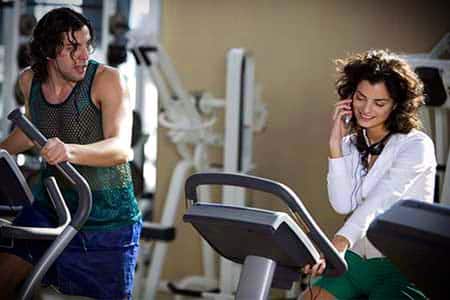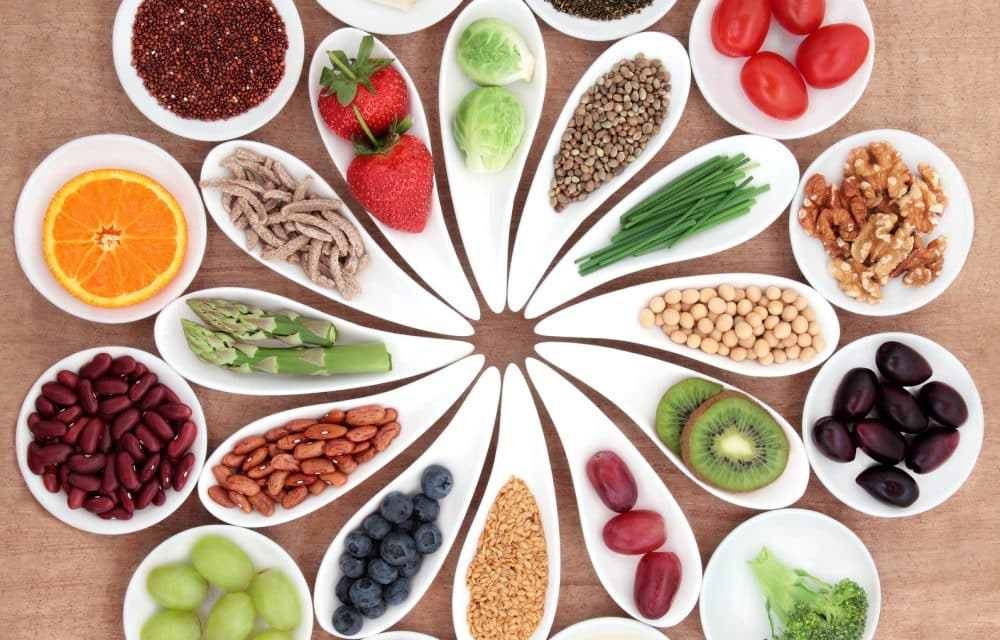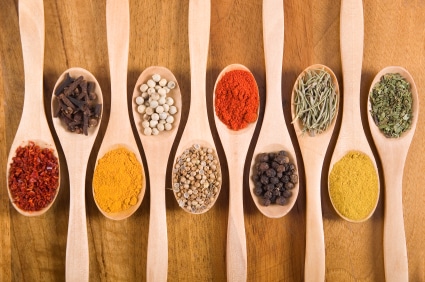Can Certain Exercises Remove Cellulite
 No matter how overweight or thin you are, cellulite can be a problem. I’m constantly asked for the magic cure. The my that exercises remove cellulite is just that, a myth. But they do help to conceal the lumps and bumps of cellulite. Just like spot exercises, while they help remove fat deposits from all over the body, they don’t necessarily just attack the spot you’re exercising, but you are strengthening the underlying muscles and giving a more toned look to the area.
No matter how overweight or thin you are, cellulite can be a problem. I’m constantly asked for the magic cure. The my that exercises remove cellulite is just that, a myth. But they do help to conceal the lumps and bumps of cellulite. Just like spot exercises, while they help remove fat deposits from all over the body, they don’t necessarily just attack the spot you’re exercising, but you are strengthening the underlying muscles and giving a more toned look to the area.
In order to effectively fight cellulite, you need to learn what causes it.
Nobody is really sure what causes cellulite, which doesn’t mean you can’t try to eradicate it. It’s actually fat cells that protrude through the connective tissues. Once it pushes through the collagen fibers, it protrudes. The thin layer of skin covering shows it as raised lumpy areas, which are normally on the bottom and thigh, but can occur on the upper arm and stomach, as well as other areas. While women have connective issue that’s vertical, men’s connective tissue is more criss-cross. That difference may account for the fact that more women than men have cellulite.
Other factors contribute to cellulite.
Women can’t seem to catch a break when it comes to cellulite. Hormonal factors may also play a role in its development. There are a number of theories how the estrogen, insulin, noradrenaline, prolactin and thyroid hormones all play a role. One of those is that menopause can slow the flow to the collagen fiber of the connective tissues. Less circulation mean less oxygen and less oxygen means a lower production of collagen. Not only that, menopause causes hormone levels to drop and less estrogen means larger fat cells. Menopause and aging also makes skin thinner, so the lumps are more noticeable.
A healthy diet and an active lifestyle can make a difference.
When you eat a healthy diet of whole foods, which is lower in sugar, you’ll help with overall weight loss and that can make the lumps and bumps look smaller as you lose weight all over your body. Cut out alcohol and lowering your carbohydrate intake helps too. Exercising regularly can improve overall circulation, sending oxygen to those areas to help build collagen or keep it stronger.
- Not only do women have the problem of hormones interfering with circulation, they also cause women to store fat in their hips, thighs and bottom. The more fat stored, the more potential for cellulite.
- You can boost your circulation with alternating hot to cold showers, cryotherapy full body treatments or massage.
- Age and genetics play a role in how much cellulite a person has. Smoking also can increase cellulite. If you smoke, quit.
- Strength training can help smooth the area of the cellulite out and make it far less noticeable. Lower body strength training will burn off fat, but most of all, it builds muscle tissue in the area.



 Before you get the idea that you should discontinue all types of exercise because you’re not getting the results you want, you need to stop and see if you’re working out hard enough to make a difference. Don’t get me wrong, I applaud all forms of exercise. Doing something is always better than doing nothing at all, but for those who want to reach specific goals and see a difference from their workout, putting in the time isn’t enough. It takes commitment to getting the most from your workout time.
Before you get the idea that you should discontinue all types of exercise because you’re not getting the results you want, you need to stop and see if you’re working out hard enough to make a difference. Don’t get me wrong, I applaud all forms of exercise. Doing something is always better than doing nothing at all, but for those who want to reach specific goals and see a difference from their workout, putting in the time isn’t enough. It takes commitment to getting the most from your workout time.
 Many people in the workforce find themselves facing the dilemma of being unable to sit comfortably, lift or even move because of excruciating back pain. That leads to one of the biggest reasons for disability claims. It doesn’t have to be that way. You can exercise to prevent and relieve back pain. There’s a lot of reasons for the surge of this painful condition. One of them is prolonged sitting. Lack of activity and functional fitness is at the top of the list. Your muscles need to stretch and move to be at their healthiest. Improved circulation, strength and flexibility help tremendously. At one time, muscle relaxers and pain medication were at the top of the treatment list. With the high rise in pain medication addiction and more understanding of the problem, that’s no longer true.
Many people in the workforce find themselves facing the dilemma of being unable to sit comfortably, lift or even move because of excruciating back pain. That leads to one of the biggest reasons for disability claims. It doesn’t have to be that way. You can exercise to prevent and relieve back pain. There’s a lot of reasons for the surge of this painful condition. One of them is prolonged sitting. Lack of activity and functional fitness is at the top of the list. Your muscles need to stretch and move to be at their healthiest. Improved circulation, strength and flexibility help tremendously. At one time, muscle relaxers and pain medication were at the top of the treatment list. With the high rise in pain medication addiction and more understanding of the problem, that’s no longer true.
 If you want to extend your lifespan, just move! You don’t need a formal training program, although they do provide a wide assortment of exercises for your entire body and all types of fitness. Adding more movement to your life, whether it’s just getting up and walking for a few minutes or doing a jumping jack or two every ten minutes, can boost your longevity. Studies show that people who move more have better cardiovascular and metabolic function. In fact, inactivity is up at the top in number four position of preventable deaths. Obesity is number one and everyone knows that inactivity can lead to obesity.
If you want to extend your lifespan, just move! You don’t need a formal training program, although they do provide a wide assortment of exercises for your entire body and all types of fitness. Adding more movement to your life, whether it’s just getting up and walking for a few minutes or doing a jumping jack or two every ten minutes, can boost your longevity. Studies show that people who move more have better cardiovascular and metabolic function. In fact, inactivity is up at the top in number four position of preventable deaths. Obesity is number one and everyone knows that inactivity can lead to obesity.
 If you’ve heard the term “inflammation” but aren’t quite sure what it means, you probably aren’t alone. It occurs as a response from the body to protect itself. There are two types of inflammation and this is usually where people get confused. There’s the acute type that occurs all of a sudden, like bashing your finger or getting a cold. The body gets into gear and sends it’s soldiers, the white blood cells, to protect it from infection. It makes the area red and swollen. Chronic inflammation comes from continual exposure to toxins or stress. It can damage the heart and create walls to block accumulated plaque in the blood vessels. When those fail, it creates a clot and that can cause heart attacks and strokes. There are many medications to fight inflammation, but some of the best are found in your spice cabinet. You can save money by growing them yourself. Here are herbs you can grow to fight inflammation.
If you’ve heard the term “inflammation” but aren’t quite sure what it means, you probably aren’t alone. It occurs as a response from the body to protect itself. There are two types of inflammation and this is usually where people get confused. There’s the acute type that occurs all of a sudden, like bashing your finger or getting a cold. The body gets into gear and sends it’s soldiers, the white blood cells, to protect it from infection. It makes the area red and swollen. Chronic inflammation comes from continual exposure to toxins or stress. It can damage the heart and create walls to block accumulated plaque in the blood vessels. When those fail, it creates a clot and that can cause heart attacks and strokes. There are many medications to fight inflammation, but some of the best are found in your spice cabinet. You can save money by growing them yourself. Here are herbs you can grow to fight inflammation.
 Just as there are reasons to exercise every day, there are a lot of reasons that workout is not necessarily at the gym. Exercising is more than just a regular workout doing body weight exercises, treadmill or other tough muscle stressing workouts. It’s getting out and having fun, while also improving your overall fitness. There are people who workout at the gym at high intensity levels for hours, every day. That’s not healthy! Your muscle groups need time to recoup. You need to have a blend of intensity levels, plus use a variety of different muscle groups.
Just as there are reasons to exercise every day, there are a lot of reasons that workout is not necessarily at the gym. Exercising is more than just a regular workout doing body weight exercises, treadmill or other tough muscle stressing workouts. It’s getting out and having fun, while also improving your overall fitness. There are people who workout at the gym at high intensity levels for hours, every day. That’s not healthy! Your muscle groups need time to recoup. You need to have a blend of intensity levels, plus use a variety of different muscle groups.
 I don’t normally blog about things like loneliness and stick normally with fitness topics, like exercise and diet. However, I was just reading about the effects of loneliness on health and realized that it not only is becoming an epidemic, it’s almost as lethal as obesity. Unfortunately, when people are obese, they also isolate themselves from others, creating a double dose of problems. Even though everyone in Louisville KY is friendly, there’s still an epidemic of loneliness here. It’s one reason that people often find that our group training provides more benefits. Not only are the participants getting a great workout and expert nutritional advice, they’re also making friends and having social interaction that’s fun.
I don’t normally blog about things like loneliness and stick normally with fitness topics, like exercise and diet. However, I was just reading about the effects of loneliness on health and realized that it not only is becoming an epidemic, it’s almost as lethal as obesity. Unfortunately, when people are obese, they also isolate themselves from others, creating a double dose of problems. Even though everyone in Louisville KY is friendly, there’s still an epidemic of loneliness here. It’s one reason that people often find that our group training provides more benefits. Not only are the participants getting a great workout and expert nutritional advice, they’re also making friends and having social interaction that’s fun.
 If you’ve followed every diet, you’ve probably eating every two hours, had normal meals or packed all your meals into a short time frame in an effort to lose weight. It’s been popular for weight loss experts to tell clients to eat more often for weight loss, because some studies showed that it boosts metabolism and keeps you burning calories in high gear throughout the day. However, other studies show that eating normal meals works just as well. Finally, there are also studies that show that intermittent fasting for 16 hours and eating all meals in an eight hour window also has weight loss and other benefits. Which one is right? Maybe they all are.
If you’ve followed every diet, you’ve probably eating every two hours, had normal meals or packed all your meals into a short time frame in an effort to lose weight. It’s been popular for weight loss experts to tell clients to eat more often for weight loss, because some studies showed that it boosts metabolism and keeps you burning calories in high gear throughout the day. However, other studies show that eating normal meals works just as well. Finally, there are also studies that show that intermittent fasting for 16 hours and eating all meals in an eight hour window also has weight loss and other benefits. Which one is right? Maybe they all are.
 I’m always telling clients to learn to use herbs and spices when cooking, to boost flavor and add nutrients without adding extra calories. There’s a number of special herbs that play an even more vital role in health. They’re called adaptogens. An adaptogen provides the material to help your body cope more easily with the stresses of living that can suck the energy out of it. They help boost the immune system, provide aid in keeping weight under control, improve endurance, make you feel better and even improve your mood.
I’m always telling clients to learn to use herbs and spices when cooking, to boost flavor and add nutrients without adding extra calories. There’s a number of special herbs that play an even more vital role in health. They’re called adaptogens. An adaptogen provides the material to help your body cope more easily with the stresses of living that can suck the energy out of it. They help boost the immune system, provide aid in keeping weight under control, improve endurance, make you feel better and even improve your mood.